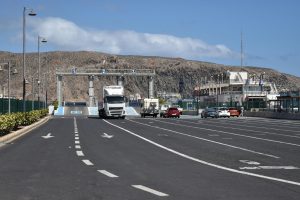Pedestrian-Only City Centers: Cars Banned from Downtown
In recent years, there has been a growing trend towards pedestrian-only city centers. This means that cars are banned from downtown areas, leaving the streets for pedestrians, cyclists, and public transportation. While this may seem like a radical shift, many cities around the world have successfully implemented this concept, leading to numerous benefits for both residents and visitors. In this article, we will explore the concept of pedestrian-only city centers and why it may be the way of the future for urban planning.
The Case for Pedestrian-Only City Centers
Pedestrian-only city centers, also known as car-free or car-restricted zones, are areas in a city where cars, trucks, and other motorized vehicles are not allowed. These areas are designed to prioritize pedestrians and create a safer, more sustainable urban environment. While the idea of banning cars from downtown may seem radical, it’s not a new concept. In fact, pedestrian-only zones have existed for centuries, including ancient cities like Pompeii and medieval towns in Europe.
With the rise of the automobile in the 20th century, cities became more car-centric, with wide roads and vast parking lots dominating the landscape. However, the negative impact of cars on the environment and public health has led to a shift in urban planning strategies. Pedestrian-only city centers are seen as a way to combat air pollution, reduce congestion, and create more livable spaces in cities. Let’s explore some of the benefits in more detail.
Improved Air Quality
One of the major benefits of pedestrian-only city centers is the improvement of air quality. According to the World Health Organization, outdoor air pollution is responsible for approximately 4.2 million premature deaths every year. Cars are a major contributor to this problem, emitting harmful pollutants like carbon monoxide and nitrogen oxides. By banning cars in downtown areas, cities can significantly reduce air pollution levels, leading to a healthier and cleaner environment for everyone.
Reduced Congestion
Anyone who has driven in a busy city center knows the frustration of sitting in traffic and trying to find a parking spot. By banning cars from downtown areas, cities can greatly reduce traffic congestion, making it easier and faster for pedestrians, cyclists, and public transportation to move around. This not only improves the quality of life for residents but also makes cities more attractive destinations for visitors.
A Safer Environment
Another significant benefit of pedestrian-only city centers is improved safety for pedestrians. According to the World Health Organization, approximately 1.35 million people die in road traffic accidents every year, with pedestrians being one of the most vulnerable groups. By banning cars in downtown areas, cities can create a safer environment for everyone to walk and cycle without the fear of being hit by a vehicle.
Successful Examples of Pedestrian-Only City Centers
Many cities around the world have already implemented pedestrian-only city centers, and the results have been overwhelmingly positive. For example, the city of Bogotá, Colombia, introduced a car-free zone in its downtown area in 1974, with the goal of reducing air pollution and increasing safety for pedestrians and cyclists. Since then, the car-free zone has grown to cover a significant part of the downtown area, with the city seeing a significant decrease in air pollution and traffic-related fatalities.
Another successful example is Copenhagen, Denmark, which has been actively working towards becoming a car-free city since the 1960s. Today, almost 50% of the city’s inhabitants commute by bicycle, and the city has seen a drastic reduction in traffic congestion and air pollution levels. Other cities, such as Madrid, Spain, and Paris, France, have also implemented car-free zones in their downtown areas, with similar positive results.
The Future of Urban Planning?
As cities continue to grow, and the negative impact of cars on the environment and public health becomes more apparent, pedestrian-only city centers may become the norm rather than the exception. With more and more cities successfully implementing this concept, it’s clear that it has numerous benefits and can greatly improve the quality of life for urban inhabitants.
However, it’s important to note that pedestrian-only city centers are not a one-size-fits-all solution. Each city has its unique challenges and needs, and a careful balance must be struck between creating car-free zones and providing access for emergency vehicles and residents who require vehicular access due to age, disability, or other valid reasons. Nevertheless, with thoughtful planning and implementation, pedestrian-only city centers can lead to a more sustainable and livable urban environment for all.
Conclusion
Pedestrian-only city centers are a growing trend in urban planning, and for good reason. By banning cars from downtown areas, cities can significantly improve air quality, reduce congestion, and create a safer and more livable environment for everyone. While it may seem like a radical shift, the success of cities that have implemented this concept proves that it’s a viable solution for creating more sustainable and healthier cities. As we move towards a greener future, pedestrian-only city centers may become the new norm in urban planning.








